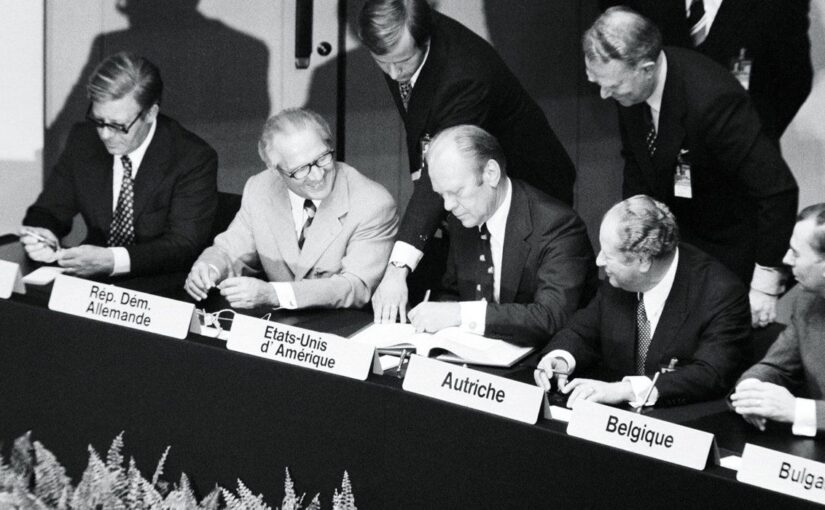A diplomatic agreement among 35 participating countries, the Helsinki Accords were signed half a century ago on August 1, 1975, as part of a broader effort to ease tensions between the Soviet Union and the Western bloc during the Cold War. In order to reduce Cold War tensions, the signatories agreed to accept post-WWII European borders, to promote economic and scientific cooperation among the countries and to respect human rights. Although non-binding, the accords established a framework for dialogue on security, economic, and humanitarian issues. Soon, monitoring the Accords’ violations gained prominence in the activities of the Soviet dissidents, with the human rights provisions being the focus of their efforts.
The Helsinki Accords crowned difficult and protracted negotiations that last years (even, decades). Upon the execution of the historic document, the then US president Ford offered his words of wisdom:
“History will judge this conference not by what we say here today, but what we will do tomorrow – not by the promises we make, but by the promises we keep”.
Over time, the Helsinki Accords were deemed an important tool to bring an end to the Cold War. But the new fault lines formed in Europe later on, and today, on the 50th anniversary of the Accords, History may judge us harshly: arguably, the global situation never deviated as far from the Accords’ principles, nor have the catastrophic risks facing humanity been higher.
On September 18th, Lithuania-based Andrei Sakharov Research Center for Democratic Development will organise a conference in Vilnius, dedicated to the anniversary of the Helsinki Agreements. The conference will address the critical points of the Cold War’s history and discuss a need for a new agreement framework.

